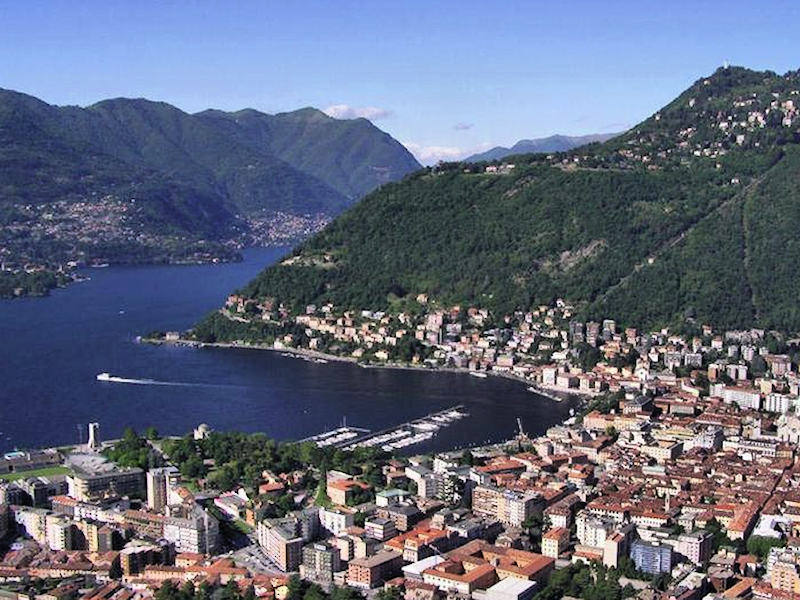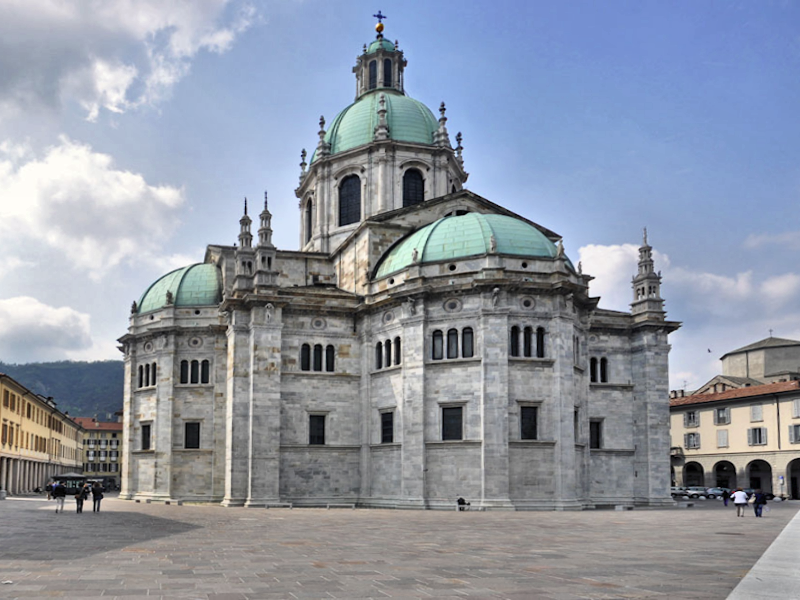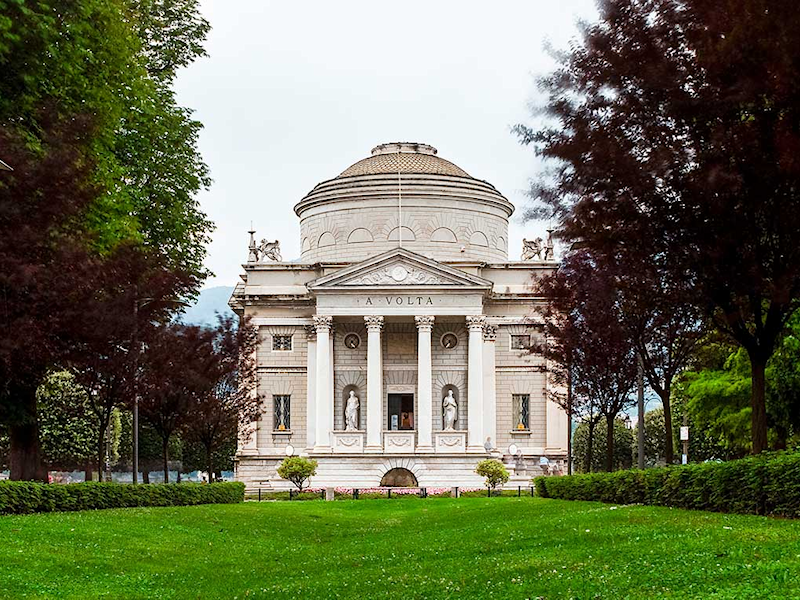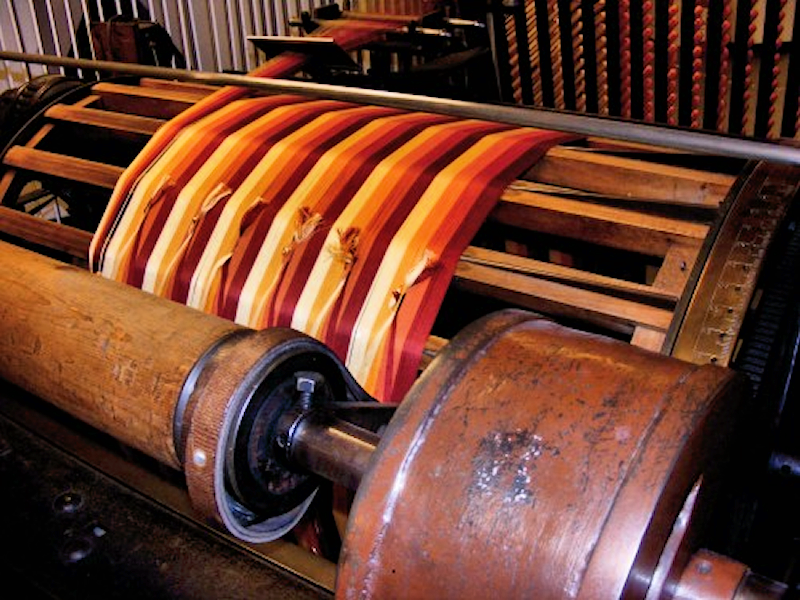COMO
 Of very ancient traditions, it was founded more than two thousand years ago by the Romans and is currently the vital center of the area where history, art, culture coexist with industry and commerce in a scenario in which the lake, with its continuous renewal of colors and atmospheres during the different seasons, provides a setting of singular beauty.
Of very ancient traditions, it was founded more than two thousand years ago by the Romans and is currently the vital center of the area where history, art, culture coexist with industry and commerce in a scenario in which the lake, with its continuous renewal of colors and atmospheres during the different seasons, provides a setting of singular beauty.
The city of Como is also famous for its silks, unique in the world in terms of finesse and originality. Another artisanal activity widespread in the surrounding area, more precisely around the town of Cantù, the ''city of furniture'', is woodworking.
Furniture of all types is produced, made with more or less valuable woods, capable of satisfying every need. Furthermore, in some centers of Brianza there are skilled craftsmen who work with wicker.
THE CATHEDRAL
 The cathedral is the result of four centuries of work, construction began in 1396 on top of the ancient Romanesque basilica of Santa Maria Maggiore, which became an episcopal seat at the beginning of the 11th century. By carefully observing the structure it is easy to distinguish the different eras and different styles: from the superb late-Gothic marble façade to the dome by Filippo Juvara from 1740, the year in which the imposing church was completed.
The cathedral is the result of four centuries of work, construction began in 1396 on top of the ancient Romanesque basilica of Santa Maria Maggiore, which became an episcopal seat at the beginning of the 11th century. By carefully observing the structure it is easy to distinguish the different eras and different styles: from the superb late-Gothic marble façade to the dome by Filippo Juvara from 1740, the year in which the imposing church was completed.
Numerous artists lent their work to the success of the work: among others the famous Intelvese architect Lorenzo degli Spazzi who was initially entrusted with the direction of the construction site, followed immediately after by the Como people Pietro da Breggia and Florio da Bontà. The works continued with the creation of the rose window on the facade by Luchino Scarabota, Amuzio da Lugano, Tommaso Rodari da Maroggia who, already active in previous years, was responsible for the construction site from 1487 to 1526.
Among other things, the most beautiful works of the façade, sides and interior are by Rodari, and he designed the model of the apse, later modified by Cristoforo Solari.
The right apse was erected under the direction of Francesco Maria Richino (1627-1633), the left one was begun by Carlo Buzzi (1653). In fact, it took more than fifty years to complete the façade; it was begun in 1447 and completed in 1498; the completion of the rose window took place in 1486.
The main portal is flanked by two aedicules with statues of Pliny the Elder and Pliny the Younger: the two famous men of letters and officials of the Roman Empire, born in the 1st century AD. in Como, they were placed in a position of honor, despite being pagan.
The two side doors that open on the sides are generally considered the masterpiece of the brothers Tommaso and Jacopo Rodari, although an intervention by Bramante has been hypothesized for the elegant southern door; the richly decorated northern door is called 'of the Frog' after a sculpture mutilated in 1912.
The dome, modified in 1773, was restored to its original shape after being damaged in 1935 by a fire. The interior is in the shape of a Latin cross, with three naves divided by cruciform pillars.
It houses a rich complex of works of art, including 16th and 17th century tapestries, made in Ferrara, Florence and Antwerp. Sixteenth-century paintings by Bernardino Luini and Gaudenzio Ferrari; a wooden altar from the early sixteenth century, dedicated to Sant'Abbondio, with precious carving work, mainly the work of the workshop of Giovan Angelo del Maino; baroque stuccoes by Francesco and Agostino Silva and nineteenth-century stained glass windows by Giuseppe and Pompeo Bertini.
The two stylophorous lions (late 11th - early 12th century) which hold the stoups, the bishop's sarcophagus and the high altar of the Campionese school, recently relocated in the presbytery, come from the church of Santa Maria Maggiore.
VOLTA TEMPLE

Already in 1899 we had the opportunity to visit the Volta Exhibition full of manuscripts and instruments of the highest scientific importance, left to us as a legacy by the scientist. Unfortunately this collection was destroyed by a furious fire and the very precious testimonies emerged reduced in number and battered.
What was left was temporarily collected in a room of the Civic Museum, meanwhile, under the guidance of collaborators and consultants who were experts in the field, the destroyed series of instruments was created to be placed alongside the original ones. The new elegant building, in neoclassical style, was commissioned by the Como industrialist F. Somaini to the architect Federico Frigerio and was erected in 1927, on the occasion of the first centenary of the death of Alessandro Volta.
The same year, eleven Nobel Prize winners took part in the great World Physics Conference organized in the city of Como.
The Temple preserves the page with the autographs of those great physicists who visited it before its official inauguration on 15 July 1928. On that occasion many political and ecclesiastical authorities, scientists and professors gathered.
On the same day the Municipality of Como took possession of the building with all the furnishings and books, excluding only the original and reconstructed memorabilia which remained the property of the State.
MUSEUM OF SILK

Opened in 1990, the Museum was intended as a fitting testimony to the history of silk in Como, a tangible sign of continuity between past and present of an industry that maintains primacy over the entire world. It covers an area of approximately 900 m2 and is located in the same building as the Setificio textile school.
The entrance to a factory has been recreated in the atrium, displaying precious time clocks. In the central room, after a mention of silkworm breeding and reeling, you can admire tools for preparing for weaving: machines for the manufacture of cotton heddles and combs, cardboard punchers, duplicating machine, section warping machine. An interesting belly-out plant from 1870 with 288 spindles testifies to the twisting phase.
In the weaving room there are two hand looms, one jacquard and one with double dobby with slat design reading, a selvage warping machine and a nineteenth-century lisage; the presentation concludes with the 1922 OMITA mechanical loom.
Subsequently you enter the control and measurement room which presents an interesting collection of devices: dynamometers, torcimeters, precision scales, asper. Then we move on to the chemical laboratory, faithfully reconstructed with period furniture and instruments.
You then enter the room dedicated to the dyeing room where there is space for a boat for dyeing fabrics, a copper pot for yarn, various tools and an ankle peg. In the print shop you will find the color kitchen, the double bottom, used to cook the thickeners and mix the dyes; a pad printing table with a large collection of wood and metal planches; a hand printing table with paintings, vintage transparencies and photoengraving tools.
Cylinder printing is represented by particular sampling machines, by finely engraved wooden and copper cylinders.
One wing is reserved for models of check and rotary printing machines. The last room is dedicated to fabric finishing operations: of great interest is an ancient wooden machine for creating the moiré effect on silk, a pleating machine and an impressive 1932 Palmer.






